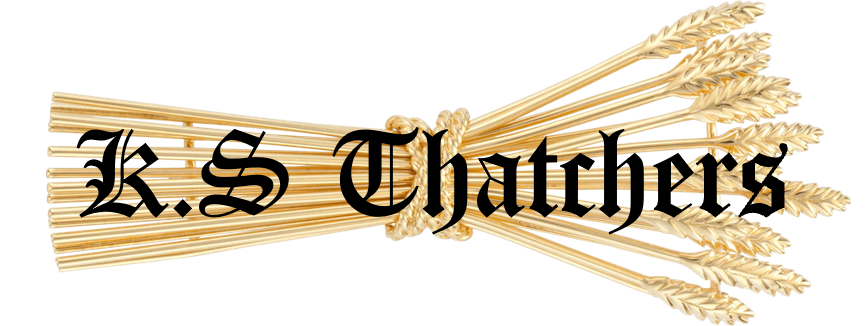Sun falling behind the horizon as a new crop of thatching straw dries natrually in the great outdoors - just as it has done for thousands of years
In the previous blog post, we discussed the single most important factor affecting the lifespan of your thatched property: the materials used.
Today, we are going to go into more detail about how KS Thatchers produce what is arguably the best thatching material this country has ever seen, right here on our farm in the Test Valley.
To produce wheat straw of this quality, it is necessary to begin with the soil.
Before we even grow the wheat, our fields are grazed for four years, alternating each year between grass and clover. The old term "grow behind sheep" means rotating the ground between grazing and crops to provide the optimum natural quality when harvest time rolls around.
You'd think that after four years of preparation for every field, we would be impatient to sow the wheat straight into the soil. But you'd be wrong. The first crop that is sown is mustard, which once it has grown, is then ploughed into the soil. This is an essential step that gets rid of the 'biddy bugs' - wire worm, daddy long-legs - that can cause crops to fail or become weak due to their larvae being present in the soil. During the growth of pasture, wire worm especially can often be present in the soil. The mustard crop, ploughed into the soil, effectively removes these while at the same time providing even more nutrients to the soil that has been enriched over the previous four years.
We then sow the wheat - a special, traditional, long-strawed variety grown for the stalk not the ear. Think that this will be the final product that goes on your roof? Nope! The first growth is grazed off by sheep, which strengthens the straw, and 'waxes' each stem of straw which gives it extra resilience. This centuries-old method not only provides a good feed for the sheep, it strengthens the final product. It also means that instead of growing to shoulder height as would otherwise be the case, it instead grows slightly shorter overall (to just above waist height) and stronger.
The straw is finally harvested during July - earlier than most other harvests - using traditional methods. That is a subject for the next blog post. Keep tuned in for more updates from the golden fields!
In the meantime, if you require a price or some free advice, we are here to help - info@ksthatchers.com or give us a call on Romsey 01794 388500.
Harvest time at KS Thatchers


